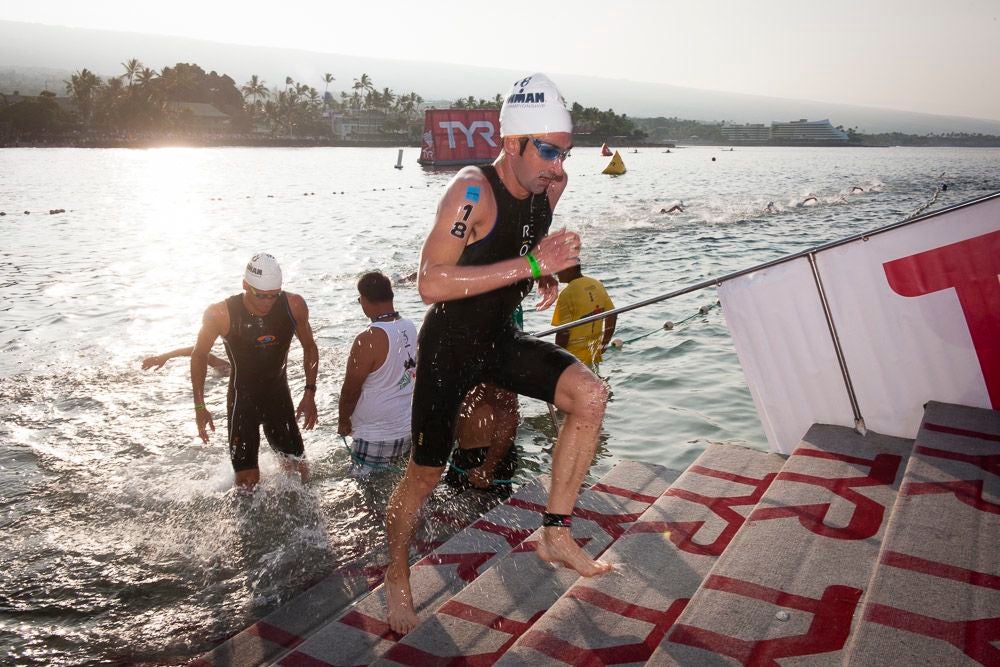Swimskins 101

Brandon Marsh at the 2013 Ironman World Championship. Photo: John David Becker
Could you benefit from wearing a swimskin in your next warm-water race?
The swimskin is a relatively new piece of equipment in triathlon. It is a smaller, thinner and non-buoyant replacement for a wetsuit that is worn over a race kit when the water is too warm for a wetsuit (by USAT standards for age-groupers, 78 degrees). A swimskin is designed to be very snug and worn only during the swim leg. It enhances speed through the water despite lacking buoyancy by compressing the body and creating minimal friction with the passing water. The swimskin provides a solution to maintain speed and hydrodynamics in the water while wearing a bulkier (read: not completely skin-tight) tri kit. Just note that sleeves that cover your shoulders cannot legally be worn in a non-wetsuit swim, so if your race kit has them, you’ll need to roll down the top half of your kit under your swimskin or risk disqualification.
Only a few races, including the Ironman World Championship, are always a non-wetsuit swim, but if you race a lot, consider buying one for the just-in-case scenarios. Before you decide to use one in a race, weigh the costs and benefits: Will the water temperature be cool enough—and is it more beneficial—to wear a wetsuit? Consider the length of the swim leg and estimate if the time gained by wearing a swimskin will outweigh the time spent removing it in transition—removing one takes at least 15 seconds.
In the end, fit and comfort are most important when picking a suit. If the swimskin fits correctly and does not restrict or impede your ability to swim, it will probably save a little time and energy.
Roka Viper Elite
$200, Rokasports.com
The draw: Strong compression
Constructed of a more rigid fabric, the Viper Elite gently compresses the body without creating any pressure points. Subtle compression on the body is noticeable but still comfortable. Stitch-less seams keep the suit suctioned against the body yet never irritate, and a smartly placed patch of fabric keeps the zipper from rubbing.
TYR Torque Elite
$280, Tyr.com
The draw: No constriction
Unadulterated freedom of movement is the ultimate reward for choosing this suit. The fabric stretches easily and feels less compressive around the torso than just about any other swimskin. You’ll hardly notice the suit at all. The arm and neck openings are the exceptions: The stitched seams can create some subtle hot spots. In Triathlete’s pool swimskin test, this suit performed equally as well as the others, despite the more flexible material.
RELATED – How It Works: Tyr’s 5-Step Wetsuit-Making Process
What’s It Worth?
In a recent pool test using patented technology developed for the U.S. Olympic swim team, swimskins saved an average of just over 2 seconds per 100 yards compared to a typical training suit. Wearing a wetsuit knocked off 6 seconds per hundred versus the training suit.
Read the fine print: USA Triathlon has created a list of suits that are legal, even when wetsuits aren’t. Know what is allowable when the mercury gets too high.